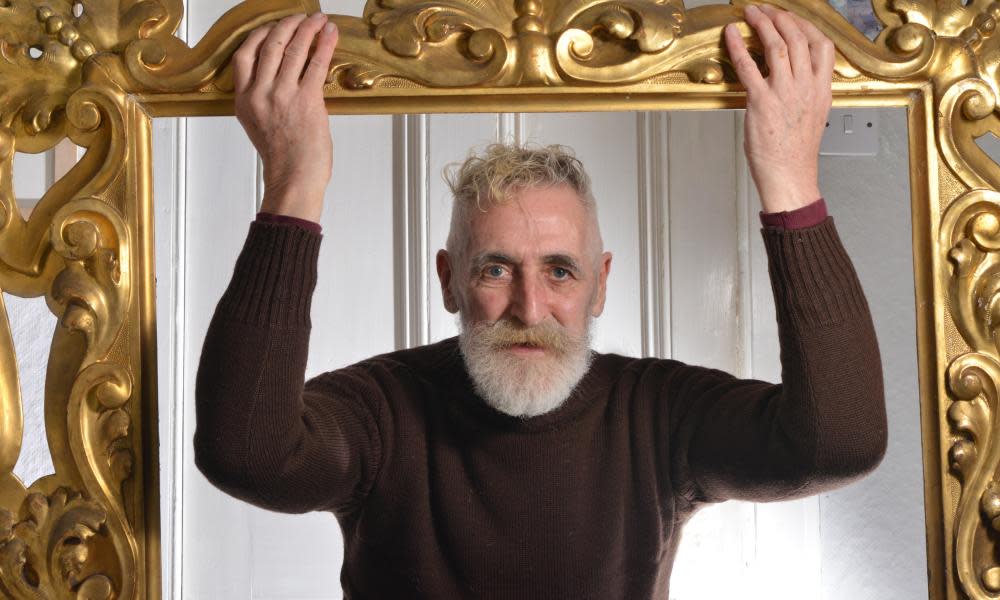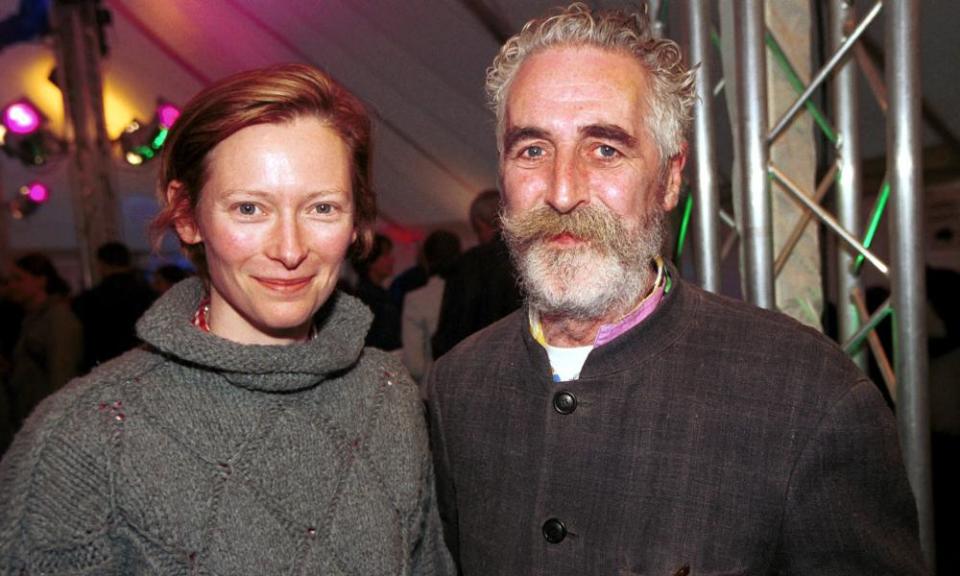John Byrne: the maverick Scottish playwright and artist was a master observer

If John Byrne had been known only for The Slab Boys, he would be considered one of Scotland’s great cultural figures. But Byrne, who died on Thursday aged 83, was responsible for so much more than the trilogy of plays that helped put Robbie Coltrane on the map. He created the TV series Tutti Frutti, also starring Coltrane, and was a celebrated artist, screenwriter, illustrator and stage adapter.
His prolific output was varied, but if there were a unifying factor it was self-portraiture. “You’re here on Earth to ask why you’re here on Earth, not to avoid the question,” he told me in 2008. “The great many of my self-portraits aren’t the most flattering.”
The Slab Boys trilogy (1978–1982), the first part of which premiered at Edinburgh’s Traverse theatre, directed by David Hayman, was a thinly disguised autobiography, recalling his formative days grinding colours in the paint-mixing room of a Paisley carpet factory in the 1950s. He fictionalised the real-life Stoddard’s as AF Stobo & Co, but it was otherwise a theatrical self-portrait.

Writing without pity or self-indulgence, Byrne had a gift for a florid turn of phrase that was as funny as it was exuberant. He would switch between the earthy and erudite within a breath, juxtaposing the extraordinary with the mundane to dazzling effect. Woe-betide the actor who broke the rhythm of sentences crafted with such architectural precision. “If you pause, it sinks and you’ll never lift it again,” he said.
Behind the raucous working-class banter of The Slab Boys, Byrne told the story of Phil McCann who was – as the playwright had been – a young teddy boy with a mentally ill mother and ambitions to get into Glasgow School of Art. McCann and his pal George “Spanky” Farrell were like a malevolent music hall act, their deadpan delivery equalled in darkness only by their dead-end jobs.
Suppressed working-class rage was diverted into merciless gags, the cruelty of the playground meeting the repartee of the music hall. “I’d never seen myself on stage – or anyone like me,” Byrne told me when Hayman revived the play in 2015. “I never saw anything about my culture.”
He caught up with the same characters in Cuttin’ a Rug (1979), set at the Paisley town hall dance, and again in Still Life (1982), set 10 years later. At the time, Byrne called them “one long play in three acts” – but then he extended the trilogy to a fourth instalment with Nova Scotia (2008), in which Phil McCann was now 60 and living in the north of Scotland. Byrne saw himself in all the characters. “I know them all,” he said. “They’re each a self-portrait.”

In person, Byrne struck a stylish figure, his whiskery moustache and full grey beard offset by layers of tweed. Speaking in a low-pitched mumble, he peppered his conversation with laughter and a wry commentary on life’s absurdities. Defiantly old-fashioned, he would refer to the wireless rather than the radio and, after kicking his EastEnders addiction, abandoned watching television. In some, this would be fogeyish, but with Byrne, it was more like an attitude of mind. He favoured a typewriter over a computer because “if you want to change a line, you’ve got to put in a fresh sheet of paper”. Copy-and-paste produced only “soap opera”.
It says much about his maverick spirit that his entry into the London art world came by way of a ruse. He reinvented himself as a naive artist by the name of Patrick, supposedly his 72-year-old father, and earned a solo show at the Portal Gallery in Mayfair in 1967.
He soon revealed his true identity, but it was as Patrick that he illustrated the 1980 compilation album, The Beatles Ballads. The same cover, portraying the Fab Four in primitive style, had been considered for “The White Album” in 1968. Colourful and whimsical, it was a strand of work he continued in album designs for his old Paisley chum Gerry Rafferty (whose acoustic guitar he decorated with a fantasy landscape of twisted trees, animals and flowers) as well as Donovan, The Humblebums and Stealers Wheel.

Even in literary mode, he continued to think visually. His scripts were illustrated with his drawings, the lines assured, the features exaggerated as he imagined his characters with their kiss-curls, teddy-boy quiffs, voluminous dresses and buttoned-up jackets.
He was, he said, the most complex person he knew, his own life a constant source of inspiration. Until recent times, he continued to work daily in his studio, adapting his style to account for the diminishing sight in his right eye. He would check in on himself through self-portraiture, whether that be the early 1970s Self Portrait in a Flowered Jacket, his curly head seemingly in the clouds, or the late 80s Self Portrait in Stetson, his face stretched and jaunty.
Related: The Slab Boys are back: John Byrne and David Hayman mix some fresh mayhem
His paintings of others, several of which are in the collection of the Scottish National Portrait Gallery, include a kilted Billy Connolly and a smirking Coltrane, who starred in Byrne’s popular BBC series Tutti Frutti – about a Scottish rock’n’roll band – in 1987. He also produced striking portraits of family members including Celie and John, his children by his first wife, Alice Simpson, whom he met in art school, his former partner Tilda Swinton, their twins Xavier and Honor, and his second wife, Jeanine Byrne, a lighting designer and pilates instructor.
Shaped by postwar austerity, inspired by 60s expansiveness and driven by a mischievous sense of humour, Byrne was a masterly observer not only of himself but of the modern world.


